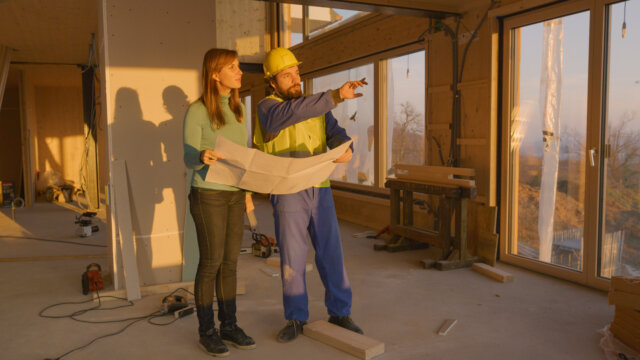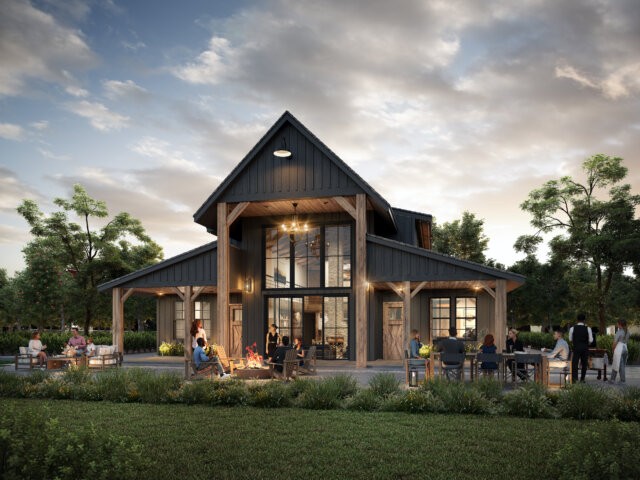Should You Contract Your Own Home? Exploring the Pros and Cons of the Owner-Builder Approach
In today’s economic climate, the dream of building a new home feels more out of reach than ever. With rising material costs, labor shortages, and sky-high general contractor fees, many homeowners are now considering a bold alternative—acting as their own general contractor.
 This trend, known as owner-builder home construction, is growing rapidly. Motivated by the desire to save money, maintain control, and bring a vision to life, thousands of people are taking on the responsibility of managing their own builds. While this route can offer meaningful advantages, it also presents real risks, especially for those without deep experience in residential construction.
This trend, known as owner-builder home construction, is growing rapidly. Motivated by the desire to save money, maintain control, and bring a vision to life, thousands of people are taking on the responsibility of managing their own builds. While this route can offer meaningful advantages, it also presents real risks, especially for those without deep experience in residential construction.
As someone who has spent over 45 years designing homes and 12 years as a licensed general contractor, I’ve seen the full spectrum of outcomes—from successful builds to projects derailed by inexperience and poor supervision. This article explores both the promise and the pitfalls of the owner-builder approach and offers insight into how to do it right.
Why More People Are Choosing to Build Their Own Homes
The rising popularity of the owner-builder model isn’t surprising when you consider the financial pressure facing today’s homebuyers. General contractors typically charge between 15% and 25% of the total construction budget, an amount that can easily add up to six figures on a new build. For many prospective homeowners, that alone is motivation to take the reins themselves.
But cost isn’t the only factor. Owner-builders are often drawn to the freedom and flexibility that comes with managing their own projects. They can choose their own subcontractors, purchase materials on their terms, and make real-time decisions without running everything through a third party. For those with a personal connection to the home—be it a dream floor plan, a unique site, or a multi-generational vision—this level of involvement can be deeply fulfilling.
The Benefits of Acting as Your Own Contractor
If approached with the right preparation and resources, building your own home can offer significant rewards. The advantages are both financial and experiential.
Cost Savings:
Eliminating the general contractor’s fee can result in substantial savings, particularly on custom or larger-scale homes. For budget-conscious families, this can make the difference between building and not building at all.
Greater Control:
Owner-builders get to make every major decision, from hiring trades to choosing finishes. This hands-on involvement allows for a higher degree of customization and responsiveness throughout the project.
Flexible Timelines:
Without a general contractor’s schedule dictating pace, owner-builders can adjust the timeline as needed—whether to take advantage of weather windows, manage cash flow, or align with personal milestones.
Educational Value:
Managing a home construction project is an education in real-world building, budgeting, and problem-solving. Many owner-builders come away with new skills and insights that serve them well in future property or renovation projects.
The Drawbacks and Risks of Going It Alone

For all the appeal of owner-building, the risks are real—and often underestimated. The same freedom that allows flexibility can also open the door to costly missteps, delays, and liability.
Lack of Experience:
Many owner-builders are first-timers. Without a working knowledge of building codes, scheduling sequences, or permitting requirements, it’s easy to miss critical steps or make expensive errors.
Unreliable Subcontractors:
General contractors usually work with trusted trades they’ve used for years. Owner-builders, on the other hand, often struggle to attract and vet quality subs. This can lead to low workmanship and even dangerous installations.
Jobsite Oversight:
Construction sites require constant supervision. Mistakes compound quickly if no one is checking work as it’s completed. A missed framing error or poorly executed installation can result in rework or structural issues.
Liability and Compliance:
As an owner-builder, you assume legal responsibility for the entire build. This includes ensuring insurance, safety measures, and code compliance—all areas where oversights can be costly or dangerous.
How Mark Stewart House Plans Support Owner-Builders
One of the most effective ways to increase your odds of success as an owner-builder is to start with a professional-grade house plan that’s designed for clarity, simplicity, and easy execution. That’s exactly what we offer at Mark Stewart Home Design.
 Every plan we produce is informed by over four decades of architectural expertise—plus my personal experience as a builder. Our designs are crafted not just for aesthetics, but to streamline construction and minimize guesswork, especially for those managing their own builds.
Every plan we produce is informed by over four decades of architectural expertise—plus my personal experience as a builder. Our designs are crafted not just for aesthetics, but to streamline construction and minimize guesswork, especially for those managing their own builds.
Highly Detailed Construction Documents:
Our house plans go beyond standard layouts. Each set includes construction-ready drawings with exacting dimensions, materials notes, elevations, and sections—all formatted in a way that tradespeople and building officials can easily interpret.
Complete Material Lists:
We provide optional full material lists for each design. These help owner-builders estimate costs accurately, minimize waste, and prevent confusion or supply delays during the build process.
Optional Lateral Engineering and Structural Calculations:
For jurisdictions that require additional engineering, we offer lateral analysis and structural calculations that integrate seamlessly with our house plans. This can help fast-track permit approvals and ensure the structural integrity of your project. Our engineering and structural calculations as well as the Energy and HVAC designs are done specifically for your exact building site.
Together, these services form a powerful support system for anyone serious about building their own home—and building it well.
When to Bring in Professional Help
The most successful owner-builders know when to ask for help. Contracting your own home doesn’t mean doing everything yourself—it means managing the process. There are several key areas where hiring a licensed pro is a wise investment.
Structural Framing:
Framing mistakes can affect everything from structural safety to drywall fit. A skilled crew can frame your home faster, safer, and more accurately.
Electrical and Plumbing Work:
These are two of the most code-sensitive aspects of the build. Licensed trades are essential here, not just for safety, but to pass inspections and avoid costly redos.
Construction Consultants:
Even just one day a week of on-site consulting from a retired general contractor can help catch issues early and provide peace of mind throughout your build.
Permit Navigation:
If your city’s permitting process is complex, a permit expeditor can save you weeks—or even months—by managing paperwork and approvals on your behalf.
Smart delegation makes the process smoother and can still deliver significant savings over hiring a full-time GC.
Final Thoughts: Is the Owner-Builder Path Right for You?
Becoming your own general contractor can be an empowering journey—but it requires time, energy, organization, and a realistic understanding of what’s involved. It’s not a shortcut, and it’s not for everyone. But for those who come prepared, it can be a cost-effective and deeply satisfying way to build the home you’ve always wanted.
The best way to begin? Start with a plan that sets you up for success. At Mark Stewart Home Design, we take pride in helping owner-builders avoid the common pitfalls of DIY construction. With professional plans, detailed documentation, and optional engineering support, we equip you with the tools to build confidently and correctly—on your own terms.









